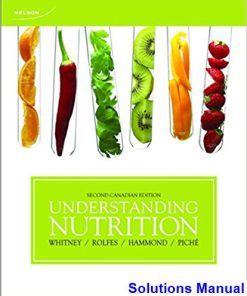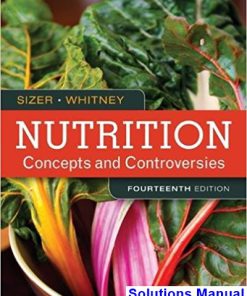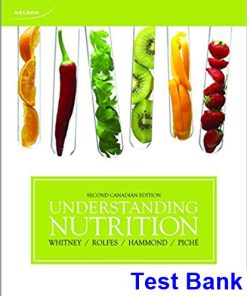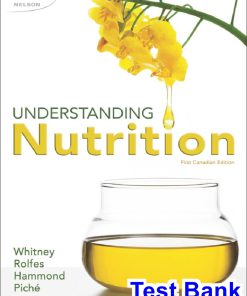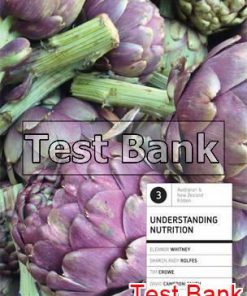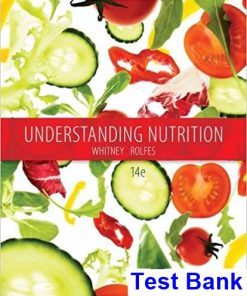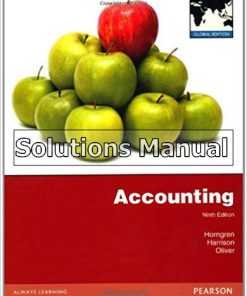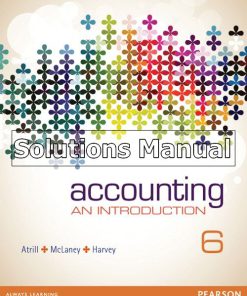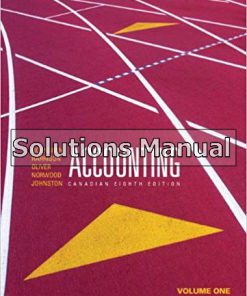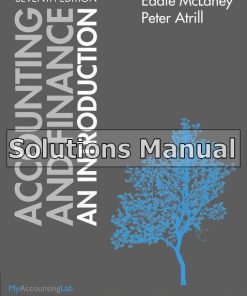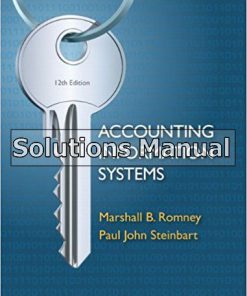With more than 1 million readers, bestselling UNDERSTANDING NUTRITION emphasizes strong science and nutrition basics, hands-on learning, and the most current coverage available. Packaged with the 2015 Dietary Guidelines, the 14th Edition includes new and updated topics in every chapter, quick-reference tables, expansive weight loss information, thorough coverage of fitness and energy systems, and much more. Readers quickly connect with the text’s approachable writing style and carefully developed art program, and its emphasis on active learning includes a rich variety of ways to help you put what you learn into action. You will also be challenged to evaluate your own dietary choices and set healthy goals through activities in the Diet & Wellness Plus digital app. In addition, through the MindTap for Nutrition companion online program, you can create a customizable learning path to walk you step by step through the course.
1. An Overview of Nutrition. Food Choices. The Nutrients. The Science of Nutrition. Dietary Reference Intakes. Nutrition Assessment. Diet and Health. Highlight 1: Nutrition Information and Misinformation.
2. Planning a Healthy Diet. Principles and Guidelines. Diet-Planning Guides. Food Labels. Highlight 2: Vegetarian Diets.
3. Digestion, Absorption, and Transport. Digestion. Absorption. The Circulatory Systems. The Health and Regulation of the GI Tract. Highlight 3: Common Digestive Problems.
4. The Carbohydrates: Sugars, Starches, and Fibers. The Chemist’s View of Carbohydrates. Digestion and Absorption of Carbohydrates. Glucose in the Body. Health Effects and Recommended Intakes of Sugars. Health Effects and Recommended Intakes of Starch and Fibers. Highlight 4: Carbs, kCalories, and Controversies.
5. The Lipids: Triglycerides, Phospholipids, and Sterols. The Chemist’s View of Fatty Acids and Triglycerides. The Chemist’s View of Phospholipids and Sterols. Digestion, Absorption, and Transport of Lipids. Lipids in the Body. Health Effects and Recommended Intakes of Saturated Fats, Trans Fats, and Cholesterol. Health Effects and Recommended Intakes of Monounsaturated and Polyunsaturated Fats. Highlight 5: High-Fat Foods Friend or Foe?
6. Protein: Amino Acids. The Chemist’s View of Proteins. Digestion and Absorption of Proteins. Proteins in the Body. Protein in Foods. Health Effects and Recommended Intakes of Protein. Highlight 6: Nutritional Genomics.
7. Energy Metabolism. Chemical Reactions in the Body. Breaking Down Nutrients for Energy. Feasting and Fasting. Highlight 7: Alcohol in the Body.
8. Energy Balance and Body Composition. Energy Balance. Energy In: The kCalories Foods Provide. Energy Out: The kCalories the Body Expends. Body Weight and Body Composition. Highlight 8: Eating Disorders.
9. Weight Management: Overweight, Obesity, and Underweight. Overweight and Obesity. Causes of Overweight and Obesity. Problems of Overweight and Obesity. Aggressive Treatments for Obesity. Weight-Loss Strategies. Underweight. Highlight 9: The Latest and Greatest Weight-Loss Diet Again.
10. The Water-Soluble Vitamins: B Vitamins and Vitamin C. The Vitamins An Overview. The B Vitamins. Vitamin C. Highlight 10: Vitamin and Mineral Supplements.
11. The Fat-Soluble Vitamins, A, D, E, and K. Vitamin A and Beta-Carotene. Vitamin D. Vitamin E. Vitamin K. Highlight 11: Antioxidant Nutrients in Disease Prevention.
12. Water and the Major Minerals. Water and the Body Fluids. The Minerals An Overview. The Major Minerals Highlight 12: Osteoporosis and Calcium.
13. The Trace Minerals. The Trace Minerals An Overview. The Trace Minerals. Contaminant Minerals. Highlight 13: Phytochemicals and Functional Foods.
14. Fitness: Physical Activity, Nutrients, and Body Adaptations. Fitness. Energy Systems and Fuels to Support Activity. Vitamins and Minerals to Support Activity. Fluids and Electrolytes to Support Activity. Diets for Physically Active People. Highlight 14: Supplements as Ergogenic Aids.
15. Life Cycle Nutrition: Pregnancy and Lactation. Nutrition prior to Pregnancy. Growth and Development during Pregnancy. Maternal Weight. Nutrition during Pregnancy. High-Risk Pregnancies. Nutrition during Lactation. Highlight 15: Fetal Alcohol Syndrome.
16. Life Cycle Nutrition: Infancy, Childhood, and Adolescence. Nutrition during Infancy. Nutrition during Childhood. Nutrition during Adolescence. Highlight 16: Childhood Obesity and the Early Development of Chronic Diseases.
17. Life Cycle Nutrition: Adulthood and the Later Years. Nutrition and Longevity. The Aging Process. Energy and Nutrient Needs of Older Adults Nutrition-Related Concerns of Older Adults. Food Choices and Eating Habits of Older Adults. Highlight 17: Nutrient-Drug Interactions.
18. Diet and Health. Nutrition and Infectious Diseases. Nutrition and Chronic Diseases. Cardiovascular Disease. Hypertension. Diabetes Mellitus. Cancer. Recommendations for Chronic Diseases. Highlight 18: Complementary and Alternative Medicine.
19. Consumer Concerns about Foods and Water. Foodborne Illnesses. Nutritional Adequacy of Foods and Diets. Environmental Contaminants. Natural Toxicants in Foods. Pesticides. Food Additives. Consumer Concerns about Water. Highlight 19: Food Biotechnology.
20. Hunger and the Global Environment. Hunger in the United States. World Hunger. Malnutrition. The Global Environment. Highlight 20: Environmentally Friendly Food Choices.
Appendix A: Cells, Hormones, and Nerves. Appendix B: Basic Chemistry Concepts. Appendix C: Biochemical Structures and Pathways. Appendix D: Measures of Protein Quality. Appendix E. Nutrition Assessment. Appendix F. Physical Activity and Energy Requirements. Appendix G. Exchange Lists for Diabetes. Appendix H. Table of Food Composition. Appendix I. WHO Nutrition Recommendations. Appendix J. Healthy People 2020. Appendix K. Aids to Calculations. Glossary. Index. Study Cards.



